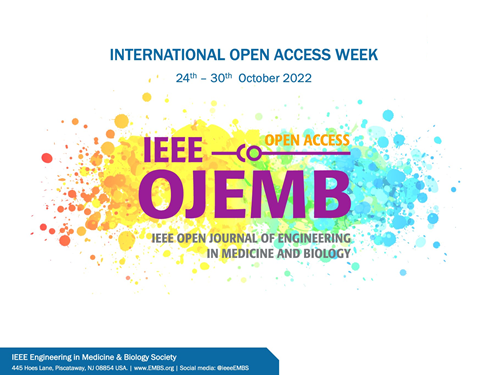Neural Implants Without Active Implanted Electronics: Possibilities and Limitations of Transcutaneous Coupling in Miniaturized Active Implants
IF 2.9
Q3 ENGINEERING, BIOMEDICAL
IEEE Open Journal of Engineering in Medicine and Biology
Pub Date : 2024-10-09
DOI:10.1109/OJEMB.2024.3477267
引用次数: 0
Abstract
无主动植入电子装置的神经植入物:微型有源植入体经皮耦合的可能性和局限性
目标:用于有源植入物无线供电和信号的经皮耦合方案已有十多年历史。本研究旨在调查这种方法在体内驱动植入式外周神经接口多通道的行为。研究方法刺激信号通过皮肤的两个触点传输到体外对应装置,体外对应装置连接到带有两个通道的袖带电极。测量刺激后的肌电图以建立招募曲线。结果:经皮耦合的局限性在于系统的可行性复杂性。多通道系统中的高电串扰使这种方法只能应用于低通道,如疼痛治疗。脉冲宽度或体外刺激幅度对电串扰没有明显影响。结论:研究结果让我们深入了解了体内经皮耦合方案的行为,并强调了其局限性和应用领域。我们的研究结果表明,经皮耦合方案是一种很有前途的植入物无线供电替代方法,因为它不需要复杂的植入电子设备、昂贵的精密电子器件和密封外壳。不过,由于物理上的限制,它在高选择性神经刺激方案中的应用受到了限制。
本文章由计算机程序翻译,如有差异,请以英文原文为准。
求助全文
约1分钟内获得全文
求助全文
来源期刊

IEEE Open Journal of Engineering in Medicine and Biology
ENGINEERING, BIOMEDICAL-
CiteScore
9.50
自引率
3.40%
发文量
20
审稿时长
10 weeks
期刊介绍:
The IEEE Open Journal of Engineering in Medicine and Biology (IEEE OJEMB) is dedicated to serving the community of innovators in medicine, technology, and the sciences, with the core goal of advancing the highest-quality interdisciplinary research between these disciplines. The journal firmly believes that the future of medicine depends on close collaboration between biology and technology, and that fostering interaction between these fields is an important way to advance key discoveries that can improve clinical care.IEEE OJEMB is a gold open access journal in which the authors retain the copyright to their papers and readers have free access to the full text and PDFs on the IEEE Xplore® Digital Library. However, authors are required to pay an article processing fee at the time their paper is accepted for publication, using to cover the cost of publication.
 求助内容:
求助内容: 应助结果提醒方式:
应助结果提醒方式:


